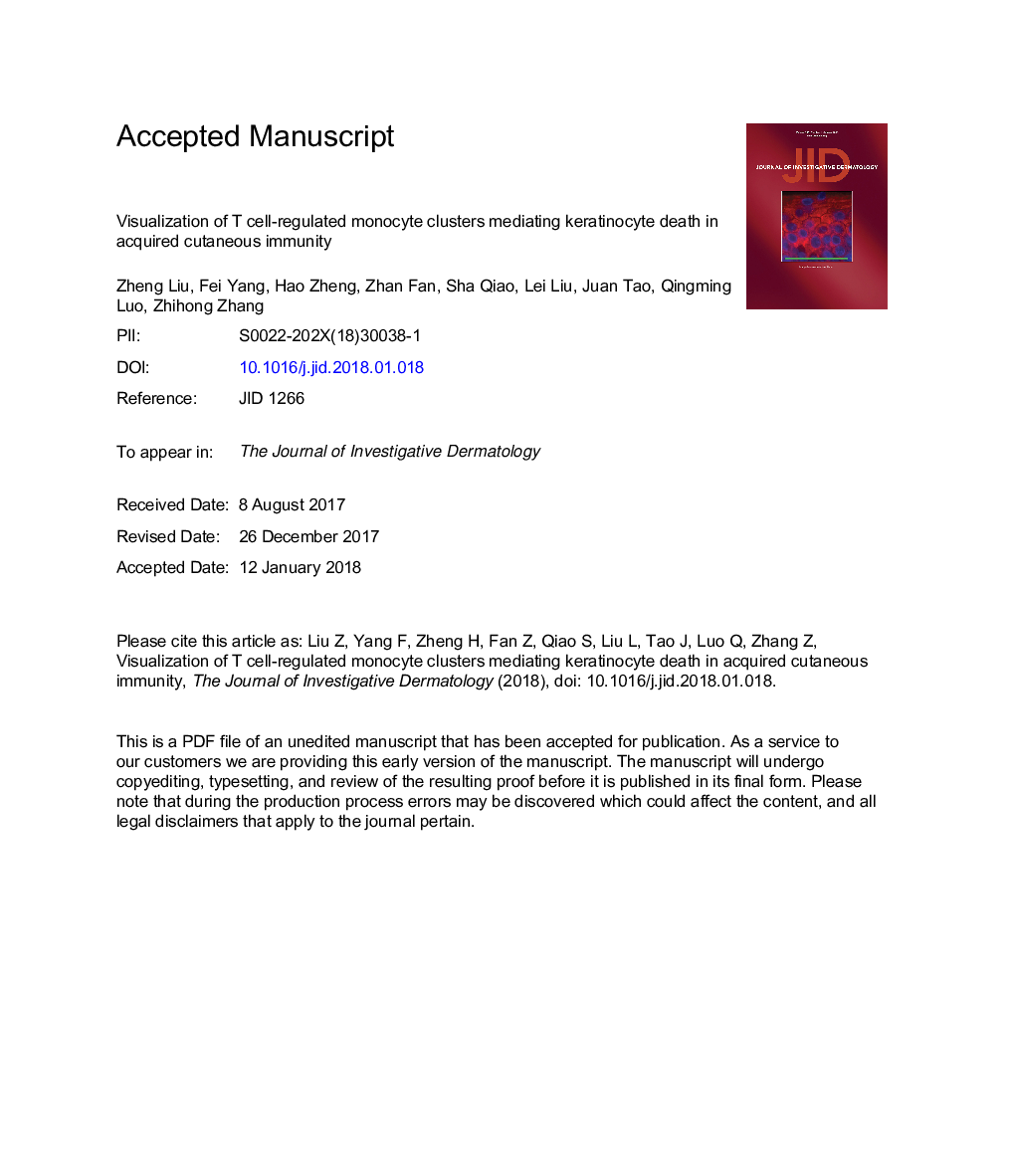| Article ID | Journal | Published Year | Pages | File Type |
|---|---|---|---|---|
| 8715888 | Journal of Investigative Dermatology | 2018 | 35 Pages |
Abstract
It remains unclear how monocytes are mobilized to amplify inflammatory reactions in T cell-mediated adaptive immunity. Here, we investigate dynamic cellular events in the cascade of inflammatory responses through intravital imaging of a multicolor-labeled murine contact hypersensitivity model. We found that monocytes formed clusters around hair follicles in the contact hypersensitivity model. In this process, effector T cells encountered dendritic cells under regions of monocyte clusters and secreted IFN-γ, which mobilizes CCR2-dependent monocyte interstitial migration and CXCR2-dependent monocyte cluster formation. We showed that hair follicles shaped the inflammatory microenvironment for communication among the monocytes, keratinocytes, and effector T cells. After disrupting the T cell-mobilized monocyte clusters through CXCR2 antagonization, monocyte activation and keratinocyte apoptosis were significantly inhibited. Our study provides a new perspective on effector T cell-regulated monocyte behavior, which amplifies the inflammatory reaction in acquired cutaneous immunity.
Related Topics
Health Sciences
Medicine and Dentistry
Dermatology
Authors
Zheng Liu, Fei Yang, Hao Zheng, Zhan Fan, Sha Qiao, Lei Liu, Juan Tao, Qingming Luo, Zhihong Zhang,
